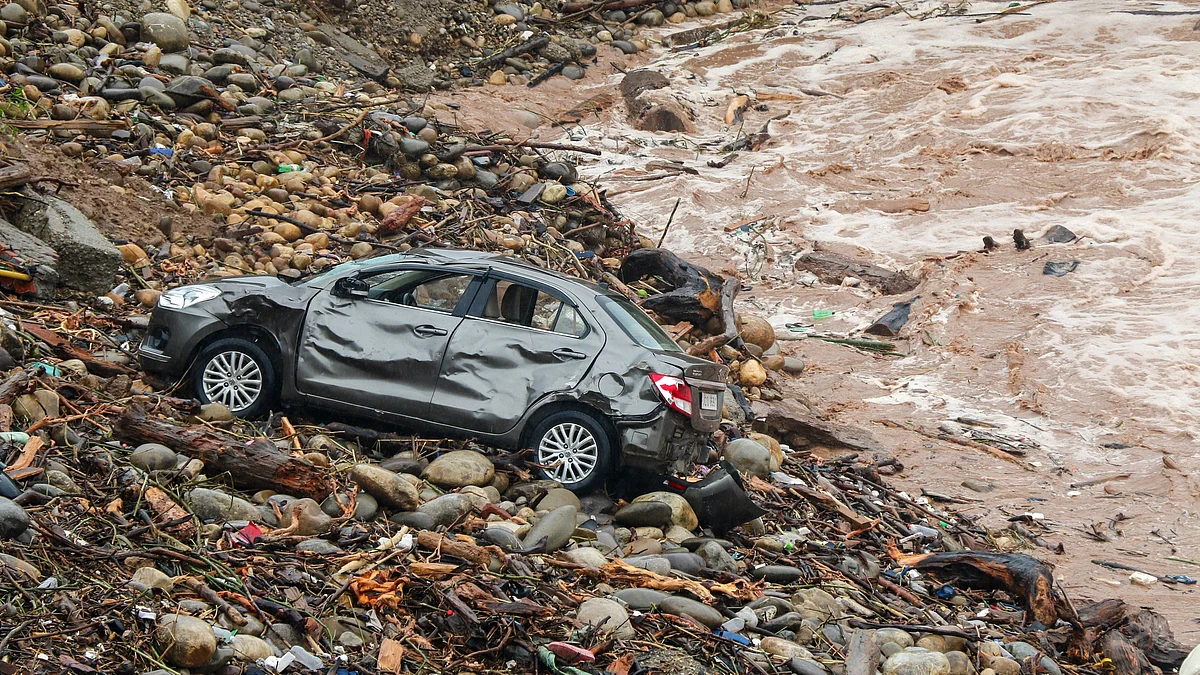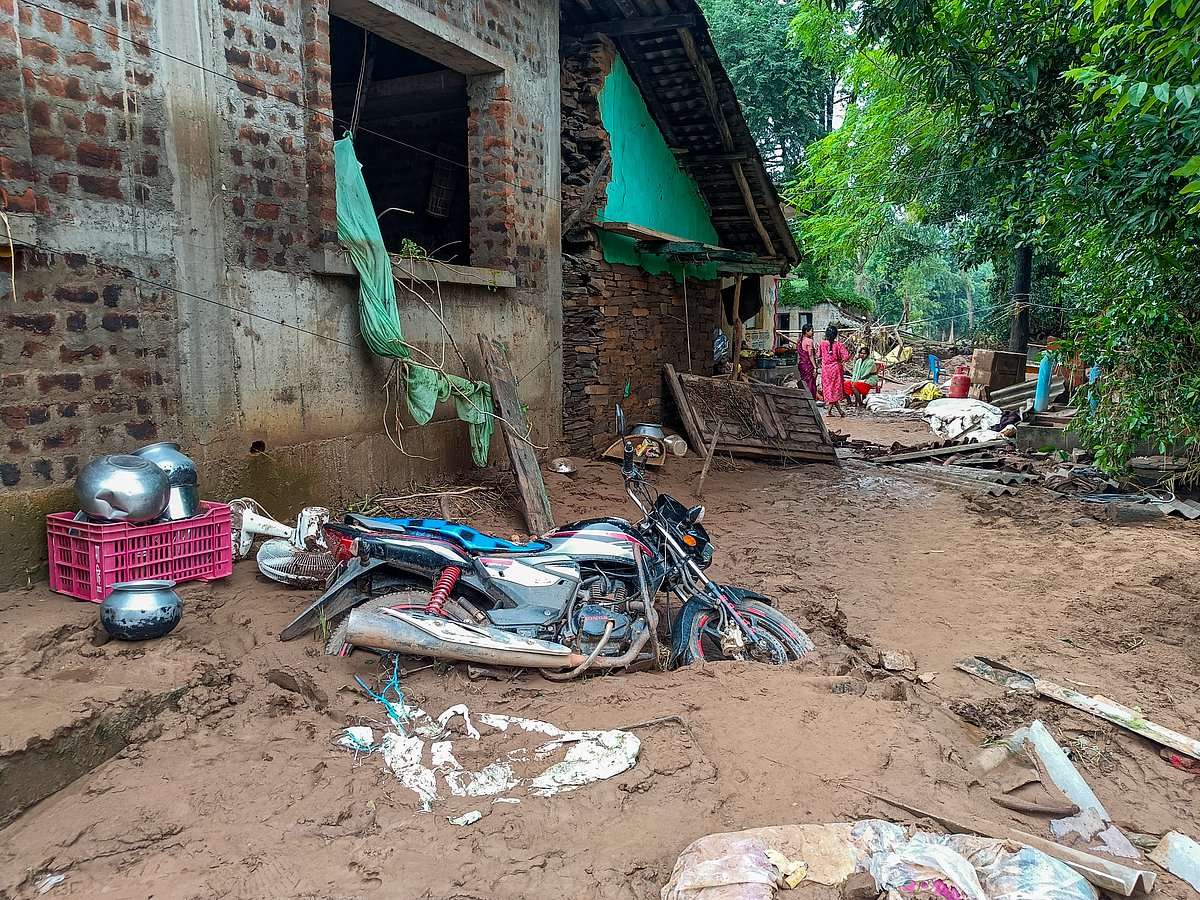Destruction, death in full spate in N. India’s wettest monsoon since Kedarnath disaster
The widening cracks in our disaster preparedness and response readiness have begun to be glaringly obvious

India is witnessing one of its most destructive monsoon seasons in recent years, with North India recording 21 per cent above-normal rainfall, marking its wettest spell since 2013 — the year the infamous Kedarnath disaster scarred public memory — the India Meteorological Department (IMD) has stated.
From landslides to broken bridges, with at least 34 Vaishno Devi pilgrims dead in Jammu and Kashmir, inundated tourist hotspots in Himachal, urban flooding in Punjab and the risk of crop failure in the northern agricultural plains, the cracks in India's disaster preparedness and response readiness have begun to be glaringly obvious.
According to official data released by the IMD, August 2025 has logged the highest number of 'extremely heavy' rainfall events in the last four years too.
Overall, the country’s cumulative rainfall since June is 7 per cent above average — but the distribution remains highly uneven, leaving some regions bearing the brunt of the deluges.
Traditionally arid regions such as Rajasthan (rainfall 92 per cent above normal) and Ladakh (181 per cent above normal) have received record-breaking downpours, while parts of the North-East and South India are facing significant rain deficits.
The worst-affected Indian states of late have been Jammu and Kashmir, Himachal Pradesh, Uttarakhand, Punjab — and curiously, Arunachal Pradesh and even Bastar in Madhya Pradesh. All are reeling from the monsoon’s fury, with predictions suggesting worse to come.
Casualties soar in Jammu and Kashmir
Jammu and Kashmir has borne the brunt of the recent downpours. In the last 24 hours alone, at least 41 people have lost their lives — 34 in a massive landslide near the Vaishno Devi shrine and another three in a flood-related drowning incident in Doda district.
The fourth Tawi Barrage bridge collapsed, submerging roads and cutting off vital routes, while mobile connectivity and electricity remain disrupted in several regions over weeks now, since the Kishtwar incident.
Rainfall in the region has surged to an astonishing 726 per cent above normal since 23 August, making this the wettest spell the region has seen since 1950.
Authorities have suspended the Vaishno Devi yatra — finally, a tad late, the territory’s chief minister too pointed out — and launched emergency rescue-and-relief operations.
Chief minister Omar Abdullah wondered at the Centre’s lack of preparedness in the union territory, despite the experiences of 2014 and more recent years.
Meanwhile, the flood alert mark was breached by the Jhelum in Anantnag and Srinagar, with water entering several residential and commercial areas, even as over 10,000 people were evacuated from low-lying flooded areas.
Himachal’s tourist sites turn inhospitable
In neighbouring Himachal Pradesh, the situation remains critical.
Incessant rain has led to flash floods, major landslides and multiple fatalities. Rivers such as the Chenab, Tawi and Jhelum are in spate, while several districts, including Mandi and Kullu, have reported hundreds of road closures, disrupting transport of and access to supplies.
Mandi has already received 1,303.5 mm of rainfall, nearly 60 per cent over its seasonal average, even as the neighbouring districts of Lahaul–Spiti and Kinnaur continue to lag behind their fair share.
In the wake of a series of disasters from heavy rainfall, the IMD has placed Chamba, Kangra and Mandi under red alert for the next two days (28–29 August), with further severe weather anticipated.
Additionally, a yellow alert has been issued for 28 August, Thursday, in Chamba, Lahaul–Spiti, Kangra, Kullu and Mandi, while Shimla and Mandi are under the same alert for 29 August, Friday, too.
Furthermore, an orange alert will stay in effect on 30–31 August across Mandi, Shimla and Solan. On 31 August, the orange alert will also apply to Kullu, Mandi, Kangra and Shimla.
Thousands of Manimahesh pilgrims remain stranded in Chamba already, meanwhile, with the National Disaster Response Force (NDRF) having rescued 3,269 so far.
Yamuna flows beyond warning mark in Delhi
August has been the wettest month of the year so far for the national capital, recording 60 per cent above its normal allotment of rain.
The water level in the Yamuna river reached 204.61 metres this morning (27 August), running above the warning mark of 204.50 metres for the second consecutive day.
Punjab underwater; Barnala, Mansa worst-hit
In Punjab, Barnala and Mansa districts were submerged after receiving 1,643 per cent excess rainfall in a single day. Streets turned into rivers, forcing authorities to suspend movement in low-lying areas. Residents were evacuated from vulnerable zones and power supplies were cut off as a safety measure.
In a major update today, the Indian Army has rescued 25 CRPF personnel and civilians from a flooded village in Punjab's Lakhanpur, which is situated on the Jammu and Kashmir border.
Army Aviation helicopters braved adverse weather to airlift all 25 people to safety.
“The building collapsed shortly after the evacuation, underscoring the urgency and precision of the operation,” a defence spokesperson stated, adding that the swift action averted a major tragedy.
Gujarat and Uttar Pradesh escape lightly?
Nearby Gujarat, while not facing the same level of disruption, has seen significant rainfall gains. The western state received 21 per cent of its seasonal quota in August alone, with 15 per cent of that in the last week, boosting hopes for a strong kharif crop in the region.
In Uttar Pradesh, the threat of flood is again looming over Prayagraj (formerly Allahabad) with several habitations submerged under water.
Meanwhile, Rajasthan — after uncharacteristic flooding in July — has been patchy and drier again in August.
Trouble in Bastar
Five people lost their lives and over 2,000 residents have been moved to safety after relentless rainfall caused flash floods and submerged large parts of four districts in Chhattisgarh's Bastar region, according to a government official on 27 August, Wednesday.
The floods, which have severely impacted the districts of Bastar, Dantewada, Sukma and Bijapur, have resulted in the deaths of five individuals — four from the same family — along with 17 livestock. Additionally, 165 houses sustained partial damage, while 86 homes were completely destroyed as overflowing rivers and streams disrupted daily life over the past two days.
Agricultural implications and climate concerns
While the surplus rainfall has improved water storage in many parts of India and may benefit agriculture, especially in drought-prone areas, it has also raised fresh alarms about flood risk, crop damage and soil erosion.
Urban areas continue to struggle with drainage failures and overwhelmed civic systems.
Meteorologists have forecast continued rainfall through early September, especially in northern and central India, further compounding recovery efforts in disaster-hit areas.

What’s fuelling the floods?
The scale of destruction unfolding during this monsoon in northern India is being amplified by long-standing infrastructural and ecological vulnerabilities.
In Himachal Pradesh, geologists and disaster agencies have repeatedly warned that aggressive hill-cutting for road widening, unstable slope management and dumping of excavation waste near riverbanks are exacerbating landslide risks. National guidelines call for slope stabilisation, controlled muck disposal and proper drainage planning — but delays in implementing these have left the terrain fragile.
When heavy rain hits, the disturbed slopes often collapse, turning infrastructure zones into disaster sites.
In Jammu and Kashmir, experts have flagged poor upkeep of flood-control infrastructure since the 2014 floods. Issues like silted channels, encroachments and slow work on the Jhelum flood-spill channel persist. The recent fatal landslide near Katra occurred in a similar high-risk zone, where foot traffic along unstable slopes exposed people to collapsing terrain.
Uttarakhand, with its geologically sensitive Himalayan rock, is especially prone to landslides. Rapid road expansion, often along precarious slopes, without consistent stabilisation, has made the terrain even more susceptible to failure during intense downpours.
A prime example is the Char Dham Highway project, which involves upgrading 890 km of roads. Environmental studies show that it has led to the clearing of around 690 hectares of forest, the cutting of over 55,000 trees and the excavation of 20 million cubic metres of soil — massively altering slope dynamics and local ecology.
In the plains, the concern shifts from unstable hills to overloaded rivers. Runoff from the hills has swollen rivers like the Sutlej and Beas, while embankments, encroachments and sand mining have narrowed natural floodplains. As a result, river levels rise faster and more unpredictably, putting downstream areas at risk.
To address these threats, the government has ostensibly launched mitigation efforts like the National Landslide Risk Mitigation Project, with Rs 1,000 crore allocated and a key proportion of the funds directed to Himachal and Uttarakhand. The U-PREPARE project in Uttarakhand, backed by the World Bank, focuses on landslide protection and emergency response. However, experts note the scale of work still lags behind the size of the risk to a considerable degree.
Union minister Nitin Gadkari recently said AI will soon be used to monitor landslide and waterlogging zones and assess bridge safety in vulnerable areas — but the ground reality is far from ideal, with the union government (and especially BJP-led ‘double-engine’ state governments) facing flak for the infrastructural and institutional collapses in the face of worsening monsoons every season.
With PTI inputs
Follow us on: Facebook, Twitter, Google News, Instagram
Join our official telegram channel (@nationalherald) and stay updated with the latest headlines
